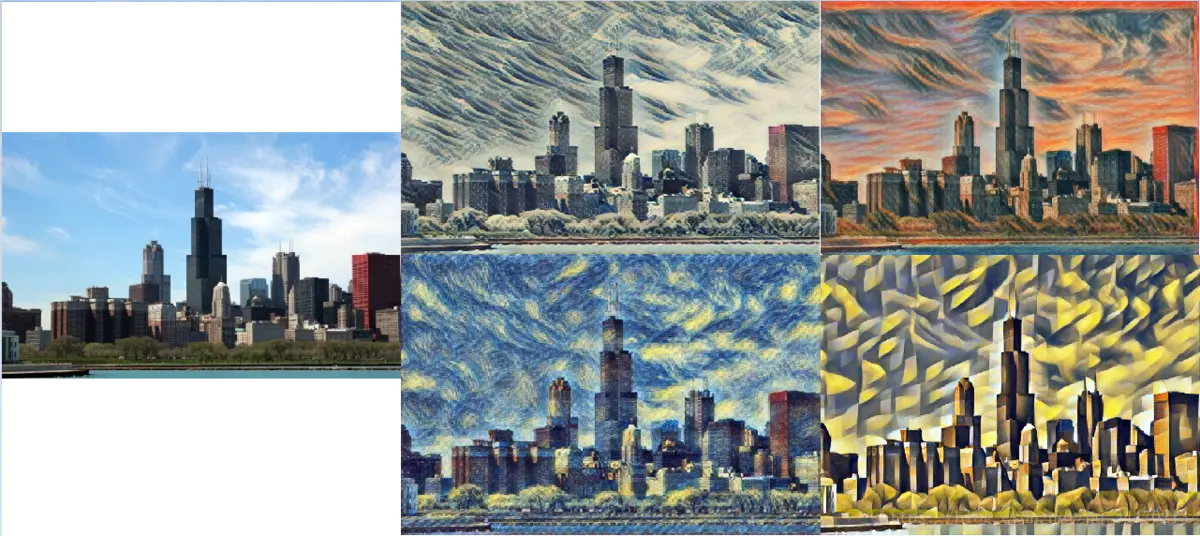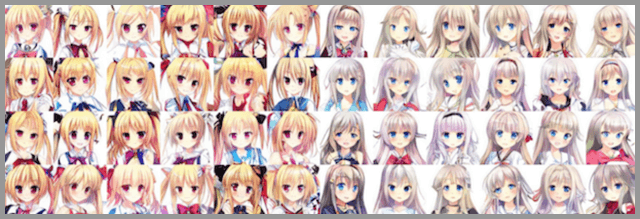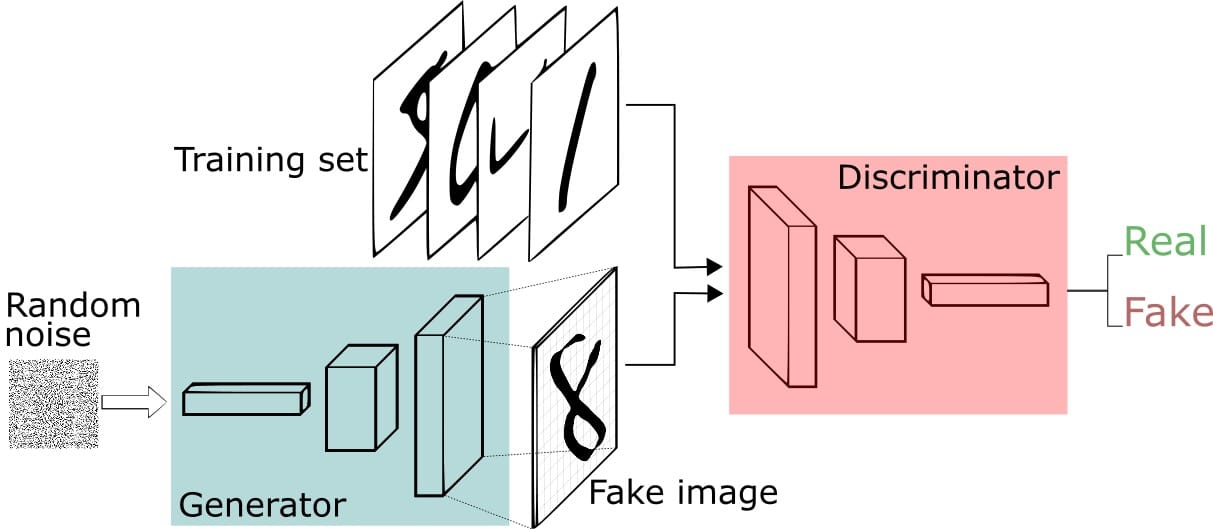🔱 Hello, I'm 👉 Classmate K,100 cases of deep learning The series will be updated continuously. Welcome to like 👍, Collection ⭐, follow 👀
This paper will use GAN model to realize the generation of handwritten digits, focusing on understanding the structure and construction method of GAN model.
1, Preliminary work
🚀 My environment:
- Locale: Python 3 six point five
- compiler: jupyter notebook
- Deep learning environment: tensorflow2 four point one
🚀 In depth learning newcomers must see:
- Xiaobai introduction to in-depth learning Chapter 1: configuring in-depth learning environment
- Introduction to Xiaobai deep learning | Chapter 2: use of compiler - Jupiter notebook
🚀 Previous Highlights - convolutional neural network:
- 100 cases of deep learning convolutional neural network (CNN) to realize mnist handwritten numeral recognition | day 1
- 100 cases of deep learning - convolutional neural network (CNN) color picture classification | day 2
- 100 cases of deep learning - convolutional neural network (CNN) garment image classification | day 3
- 100 cases of deep learning - convolutional neural network (CNN) flower recognition | day 4
- 100 cases of deep learning - convolutional neural network (CNN) weather recognition | day 5
- 100 cases of deep learning - convolutional neural network (VGG-16) to identify the pirate king straw hat group | day 6
- 100 cases of deep learning - convolutional neural network (VGG-19) to identify the characters in the spirit cage | day 7
- 100 cases of deep learning - convolutional neural network (ResNet-50) bird recognition | day 8
- 100 cases of deep learning - convolutional neural network (AlexNet) hand-in-hand teaching | day 11
- 100 cases of deep learning - convolutional neural network (CNN) identification verification code | day 12
- 100 cases of deep learning - convolutional neural network (perception V3) recognition of sign language | day 13
- 100 cases of deep learning - convolution neural network (Inception-ResNet-v2) recognition of traffic signs | day 14
- 100 cases of deep learning - convolutional neural network (CNN) for license plate recognition | day 15
- 100 cases of in-depth learning - convolutional neural network (CNN) to identify the Magic Baby Xiaozhi group | day 16
- 100 cases of deep learning - convolutional neural network (CNN) attention detection | day 17
🚀 Highlights of previous issues - cyclic neural network:
- 100 cases of deep learning - circular neural network (RNN) to achieve stock prediction | day 9
- 100 cases of deep learning - circular neural network (LSTM) to realize stock prediction | day 10
🚀 This article is selected from the column: 100 cases of deep learning
1. Set GPU
If you are using a CPU, you can comment out this part of the code.
import tensorflow as tf
gpus = tf.config.list_physical_devices("GPU")
if gpus:
tf.config.experimental.set_memory_growth(gpus[0], True) #Set the amount of GPU video memory and use it on demand
tf.config.set_visible_devices([gpus[0]],"GPU")
# Print the graphics card information and confirm that the GPU is available
print(gpus)
[PhysicalDevice(name='/physical_device:GPU:0', device_type='GPU')]
from tensorflow.keras import layers, datasets, Sequential, Model, optimizers from tensorflow.keras.layers import LeakyReLU, UpSampling2D, Conv2D import matplotlib.pyplot as plt import numpy as np import sys,os,pathlib
2. Define training parameters
img_shape = (28, 28, 1) latent_dim = 200
2, What is generative countermeasure network
1. Brief introduction
The generative countermeasure network (GAN) includes a generator and a discriminator. The two models continue to learn and evolve through countermeasure training.
-
Generator: generates data (mostly images) to "fool" the discriminator.
-
Discriminator: judge whether the image is real or machine generated, in order to find out the "false data" generated by the generator.
2. Application fields
GAN has a wide range of applications, including image synthesis, style migration, photo restoration, photo editing, data enhancement and so on.
1) Style transfer
Image style migration is to convert the style of image A into image B to get A new image.

2) Image generation
GAN can not only generate faces, but also generate other types of pictures, such as comic characters.

3, Network structure
In short, it is to use the generator to generate handwritten digital images, and use the discriminator to identify the authenticity of the images. They learn (volume) against each other, and constantly improve themselves in the process of learning (volume) until the generator can generate pictures that confuse the true with the false (the discriminator cannot judge whether they are true or false). The structure diagram is as follows:

GAN steps:
- 1. The Generator receives the random number and returns the generated image.
- 2. Send the generated digital image to the Discriminator together with the digital image in the actual data set.
- 3. The Discriminator receives the real and false images and returns the probability. The number between 0 and 1, 1 indicates true and 0 indicates false.
4, Build generator
def build_generator():
# ======================================= #
# Generator, input a string of random numbers to generate pictures
# ======================================= #
model = Sequential([
layers.Dense(256, input_dim=latent_dim),
layers.LeakyReLU(alpha=0.2), # Higher level activation function
layers.BatchNormalization(momentum=0.8), # BN normalization
layers.Dense(512),
layers.LeakyReLU(alpha=0.2),
layers.BatchNormalization(momentum=0.8),
layers.Dense(1024),
layers.LeakyReLU(alpha=0.2),
layers.BatchNormalization(momentum=0.8),
layers.Dense(np.prod(img_shape), activation='tanh'),
layers.Reshape(img_shape)
])
noise = layers.Input(shape=(latent_dim,))
img = model(noise)
return Model(noise, img)
5, Build discriminator
def build_discriminator():
# ===================================== #
# The discriminator discriminates the authenticity of the input picture
# ===================================== #
model = Sequential([
layers.Flatten(input_shape=img_shape),
layers.Dense(512),
layers.LeakyReLU(alpha=0.2),
layers.Dense(256),
layers.LeakyReLU(alpha=0.2),
layers.Dense(1, activation='sigmoid')
])
img = layers.Input(shape=img_shape)
validity = model(img)
return Model(img, validity)

- Discriminator training principle: through the identification of the input picture, so as to achieve the effect of improvement
- Generator training principle: the image generated by the discriminator is identified to achieve improvement
# Create discriminator
discriminator = build_discriminator()
# Define optimizer
optimizer = tf.keras.optimizers.Adam(1e-4)
discriminator.compile(loss='binary_crossentropy',
optimizer=optimizer,
metrics=['accuracy'])
# Create generator
generator = build_generator()
gan_input = layers.Input(shape=(latent_dim,))
img = generator(gan_input)
# Predict the generated false picture
validity = discriminator(img)
combined = Model(gan_input, validity)
combined.compile(loss='binary_crossentropy', optimizer=optimizer)
6, Training model
1. Save sample pictures
def sample_images(epoch):
"""
Save sample picture
"""
row, col = 4, 4
noise = np.random.normal(0, 1, (row*col, latent_dim))
gen_imgs = generator.predict(noise)
fig, axs = plt.subplots(row, col)
cnt = 0
for i in range(row):
for j in range(col):
axs[i,j].imshow(gen_imgs[cnt, :,:,0], cmap='gray')
axs[i,j].axis('off')
cnt += 1
fig.savefig("images/%05d.png" % epoch)
plt.close()
2. Training model
train_on_batch: the function accepts a single batch of data, performs back propagation, and then updates the model parameters. The size of this batch of data can be arbitrary, that is, it does not need to provide a clear batch size. It belongs to the fine control training model.
def train(epochs, batch_size=128, sample_interval=50):
# Load data
(train_images,_), (_,_) = tf.keras.datasets.mnist.load_data()
# Standardize the picture to the [- 1, 1] range
train_images = (train_images - 127.5) / 127.5
# data
train_images = np.expand_dims(train_images, axis=3)
# create label
true = np.ones((batch_size, 1))
fake = np.zeros((batch_size, 1))
# Cycle training
for epoch in range(epochs):
# Randomly select batch_size picture
idx = np.random.randint(0, train_images.shape[0], batch_size)
imgs = train_images[idx]
# Generate noise
noise = np.random.normal(0, 1, (batch_size, latent_dim))
# The generator generates pictures through noise, Gen_ The shape of IMGs is: (128, 28, 28, 1)
gen_imgs = generator.predict(noise)
# Training discriminator
d_loss_true = discriminator.train_on_batch(imgs, true)
d_loss_fake = discriminator.train_on_batch(gen_imgs, fake)
# Return loss value
d_loss = 0.5 * np.add(d_loss_true, d_loss_fake)
# Training generator
noise = np.random.normal(0, 1, (batch_size, latent_dim))
g_loss = combined.train_on_batch(noise, true)
print ("%d [D loss: %f, acc.: %.2f%%] [G loss: %f]" % (epoch, d_loss[0], 100*d_loss[1], g_loss))
# Save sample picture
if epoch % sample_interval == 0:
sample_images(epoch)
train(epochs=30000, batch_size=256, sample_interval=200)
0 [D loss: 0.587824, acc.: 67.77%] [G loss: 0.634870] 1 [D loss: 0.387015, acc.: 74.22%] [G loss: 0.541133] 2 [D loss: 0.380705, acc.: 63.67%] [G loss: 0.455188] 3 [D loss: 0.408720, acc.: 56.25%] [G loss: 0.405431] 4 [D loss: 0.445802, acc.: 52.34%] [G loss: 0.343866] ...... 176 [D loss: 0.394246, acc.: 66.41%] [G loss: 0.648134] 177 [D loss: 0.393966, acc.: 66.21%] [G loss: 0.640118] 178 [D loss: 0.402815, acc.: 65.62%] [G loss: 0.641665] 179 [D loss: 0.404573, acc.: 65.82%] [G loss: 0.647686] 180 [D loss: 0.394707, acc.: 67.19%] [G loss: 0.631329] ......
7, Generate dynamic graph
If an error is reported: ModuleNotFoundError: No module named 'imageio', you can use: pip install imageio to install the imageio library.
import imageio
def compose_gif():
# Picture address
data_dir = "F:/jupyter notebook/DL-100-days/code/images"
data_dir = pathlib.Path(data_dir)
paths = list(data_dir.glob('*'))
gif_images = []
for path in paths:
print(path)
gif_images.append(imageio.imread(path))
imageio.mimsave("test.gif",gif_images,fps=2)
compose_gif()
F:\jupyter notebook\DL-100-days\code\images\00000.png F:\jupyter notebook\DL-100-days\code\images\00200.png F:\jupyter notebook\DL-100-days\code\images\00400.png F:\jupyter notebook\DL-100-days\code\images\00600.png F:\jupyter notebook\DL-100-days\code\images\00800.png F:\jupyter notebook\DL-100-days\code\images\01000.png .....
Display of image generation process (about 50s):

In depth learning newcomers must see:
- Xiaobai introduction to in-depth learning Chapter 1: configuring in-depth learning environment
- Introduction to Xiaobai deep learning | Chapter 2: use of compiler - Jupiter notebook
Previous highlights
- 100 cases of deep learning convolutional neural network (CNN) to realize mnist handwritten numeral recognition | day 1
- 100 cases of deep learning - convolutional neural network (CNN) color picture classification | day 2
- 100 cases of deep learning - convolutional neural network (CNN) garment image classification | day 3
- 100 cases of deep learning - convolutional neural network (CNN) flower recognition | day 4
- 100 cases of deep learning - convolutional neural network (CNN) weather recognition | day 5
- 100 cases of deep learning - convolutional neural network (VGG-16) to identify the pirate king straw hat group | day 6
- 100 cases of deep learning - convolutional neural network (VGG-19) to identify the characters in the spirit cage | day 7
- 100 cases of deep learning - convolutional neural network (ResNet-50) bird recognition | day 8
- 100 cases of deep learning - circular neural network (RNN) to achieve stock prediction | day 9
- 100 cases of deep learning - circular neural network (LSTM) to realize stock prediction | day 10
- 100 cases of deep learning - convolutional neural network (AlexNet) hand-in-hand teaching | day 11
- 100 cases of deep learning - convolutional neural network (CNN) identification verification code | day 12
- 100 cases of deep learning - convolutional neural network (perception V3) recognition of sign language | day 13
- 100 cases of deep learning - convolution neural network (Inception-ResNet-v2) recognition of traffic signs | day 14
- 100 cases of deep learning - convolutional neural network (CNN) for license plate recognition | day 15
- 100 cases of in-depth learning - convolutional neural network (CNN) to identify the Magic Baby Xiaozhi group | day 16
- 100 cases of deep learning - convolutional neural network (CNN) attention detection | day 17
🚀 From column: 100 cases of deep learning
Unfinished ~
Continuous updates welcome likes 👍, Collection ⭐, follow 👀
- give the thumbs-up 👍: Praise gives me the motivation to continuously update
- Collection ⭐ Note: you can find articles at any time after collection
- follow 👀: Follow me to receive the latest articles for the first time